Asian double eyelid blepharoplasty is very popular all over the world. Approximately 50% of people of Asian-descent are born with a defined eyelid crease, also known as a double eyelid fold. People who want to have a double eyelid fold do so because they want their eyes to appear more open, and brighter..
Surprisingly, a significant proportion of people who have Asian eyelid surgery become extremely concerned about how their eyelids look shortly after the procedure, so they inquire about revision surgery. I’ll talk about how I help people who come to us after having surgery elsewhere and want revision surgery.

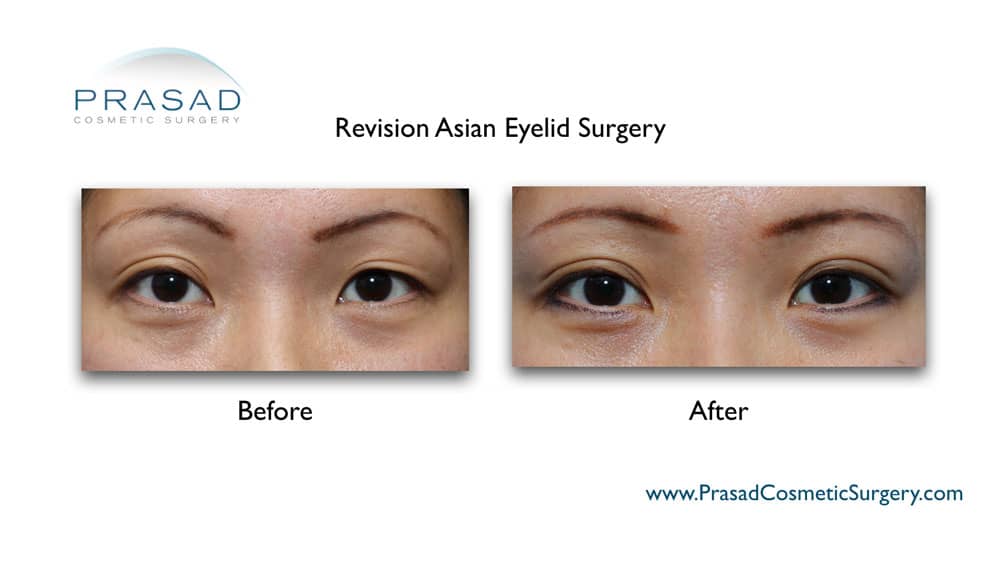
As an eyelid specialist, I have devoted a significant portion of my time to procedures for Asian eyes. I routinely perform both incisional, and non-incisional Asian double eyelid blepharoplasty, as well as epicanthoplasty. In addition, I perform revision Asian double eyelid procedures to correct surgery previously performed by other doctors.
The Role of Swelling in Double Eyelid Blepharoplasty Recovery
Some people believe that their new double eyelid creases are too high in the first few days to weeks after Asian double eyelid surgery. This is frequently followed by requests for immediate revision surgery.
Understanding the stages of healing can help you understand why revision surgery is not recommended in the first few weeks after surgery. Furthermore, certain aspects of Asian eyelid surgery can result in prolonged swelling between the eyelid crease, and the eyelid margin for a longer period of time than non-Asian eyelid surgery. Swelling is caused by inflammation and circulation.

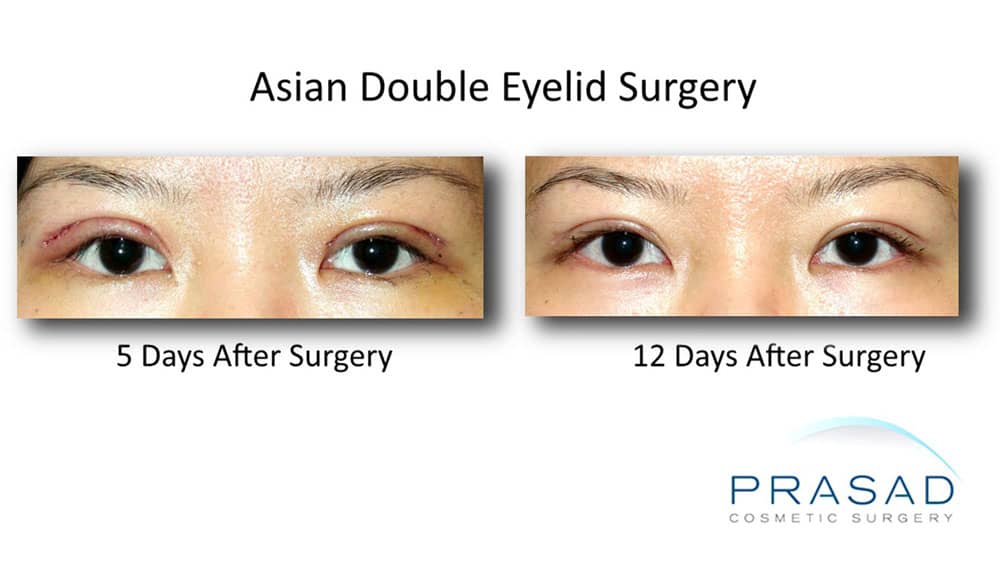
When to Consider Asian Blepharoplasty Revision
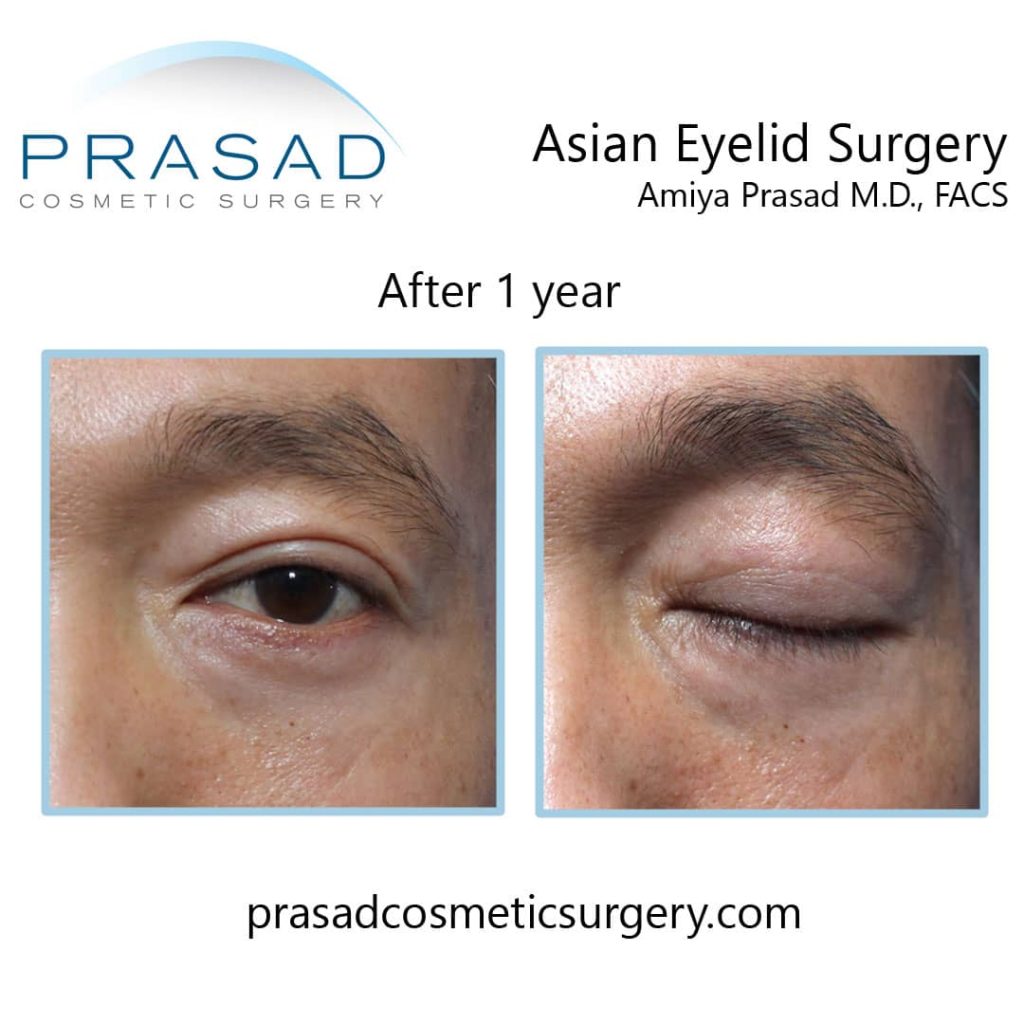
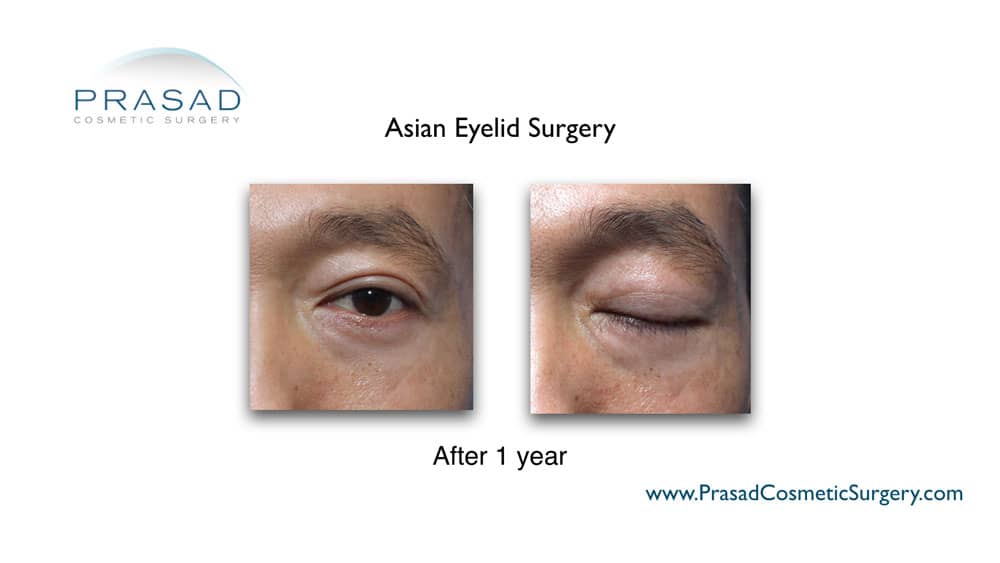
Many people who inquire about revision surgery after Asian eyelid surgery reach hasty conclusions. Swelling gives the impression that the eyelid crease is too high, which is a very common occurrence. With this knowledge, what is an appropriate situation for surgical revision? The key principle of double eyelid surgery is to create a crease by connecting the muscle that lifts the eyelid, known as the levator muscle, to the eyelid skin.
If the crease is not well formed, a surgical revision can be considered. In many situations, if the crease does not develop properly after incisional surgery, I will perform non-incisional blepharoplasty to connect the levator muscle to the skin without having to reopen the eyelid as was done in the original surgery.
Asian Eyelid Surgery Before and After
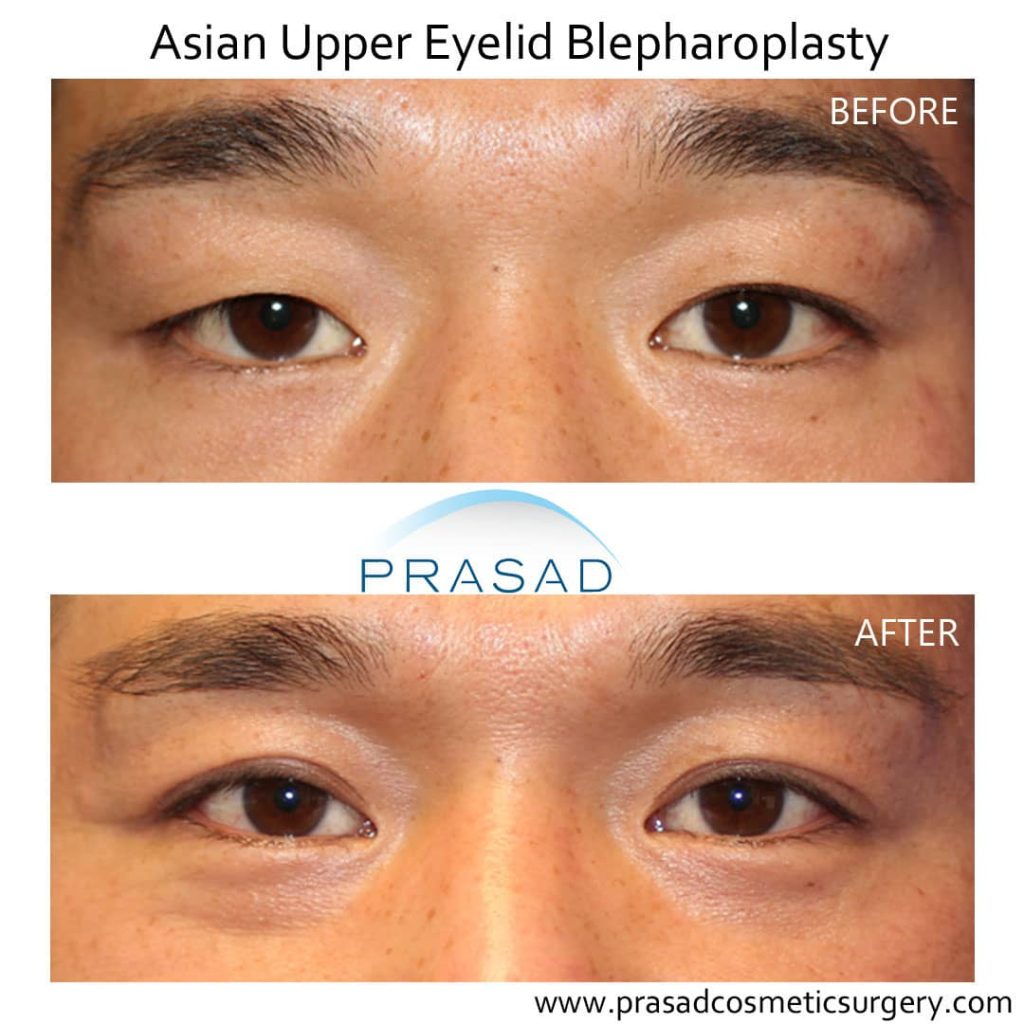
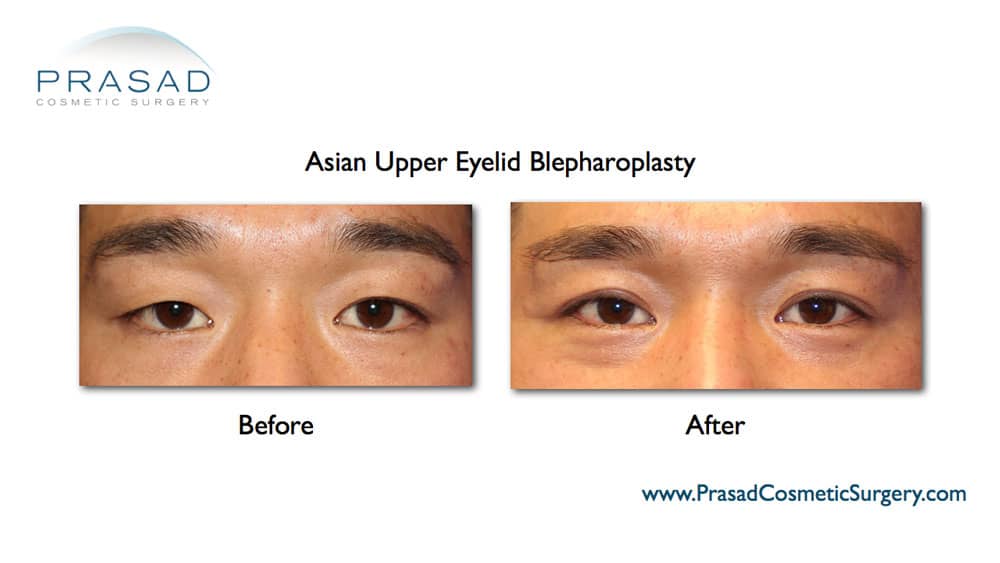
Possible Double Eyelid Surgery Complications

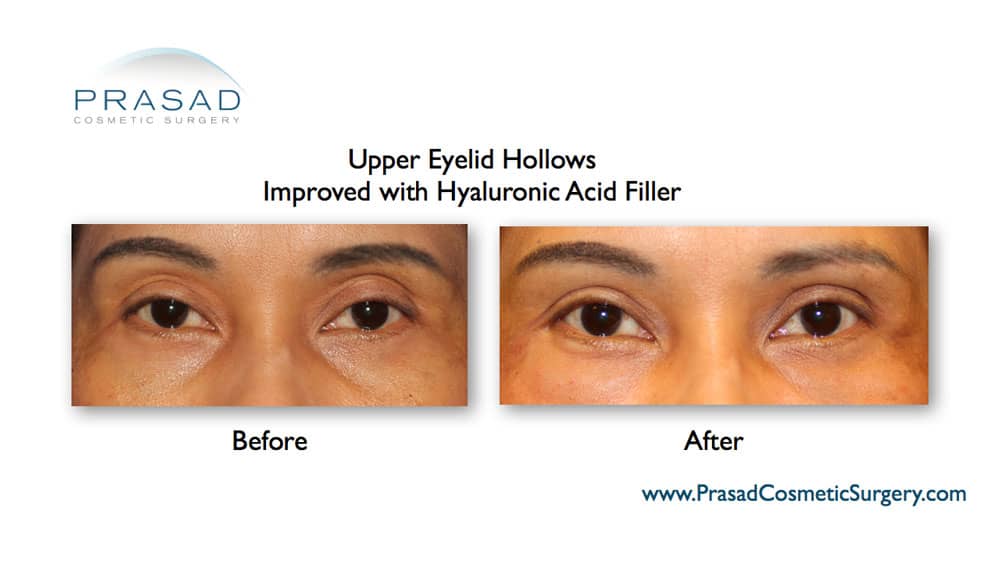
Advantages of Local Anesthesia and LITE IV Sedation
As with primary surgery, I perform revision eyelid surgery under local anesthesia and LITE IV sedation rather than general anesthesia, which allows the patient to recover faster, and more comfortably.
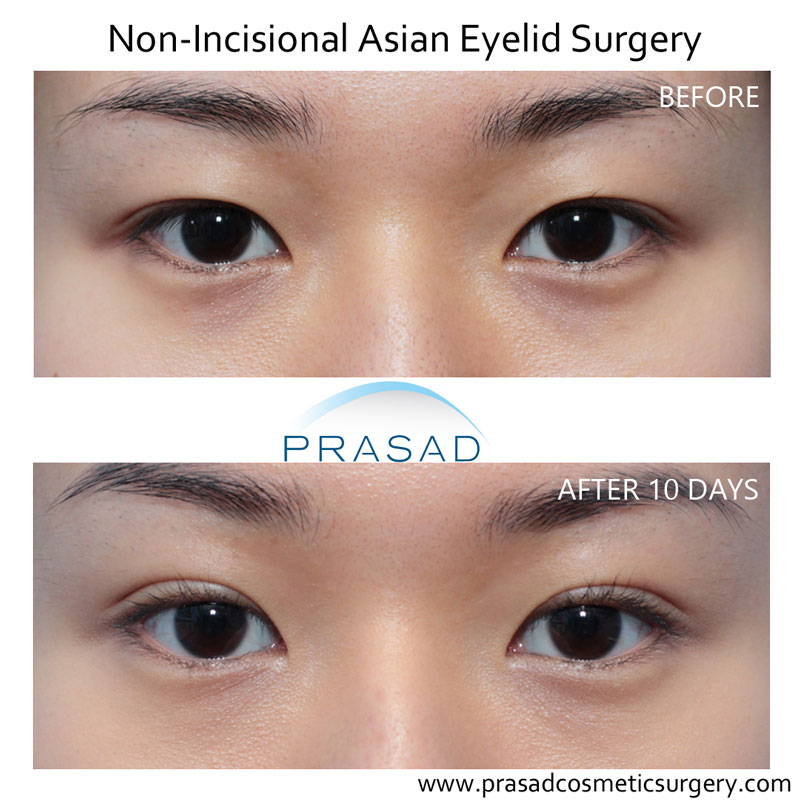
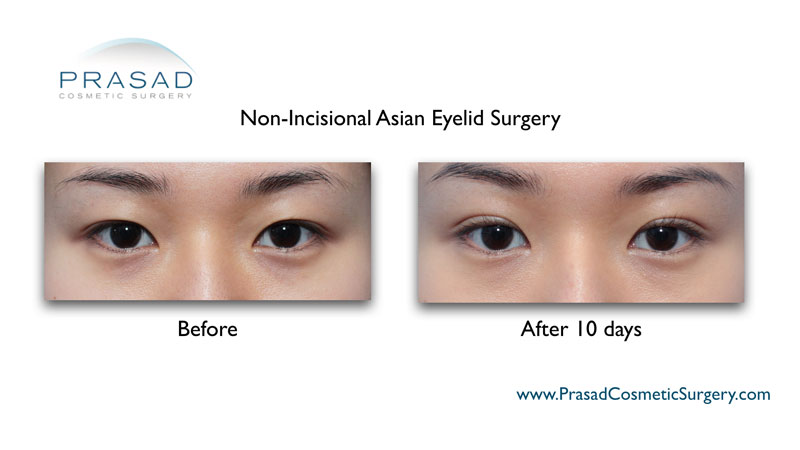
Conclusion
Double Eyelid Surgery in NYC and Long Island, New York
Dr Amiya Prasad is a Board-certified cosmetic surgeon, and Fellowship-trained oculofacial plastic & reconstructive surgeon. He’s been in practice in Manhattan, and Long Island for over 25 years. To schedule an appointment fill-up the form below or call our offices at (212) 265-8877 for Manhattan, New York City; (516) 742-4636 Garden City, Long Island; or (703) 356-1336 for Vienna, Virginia.
